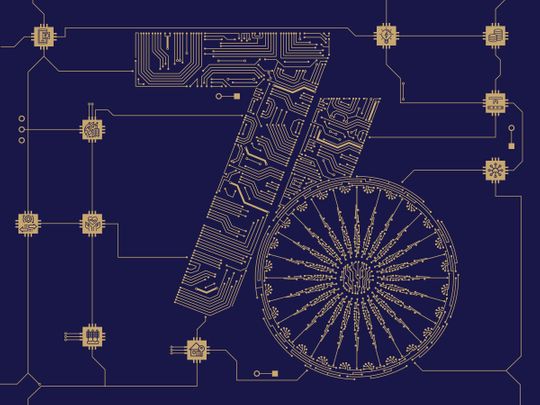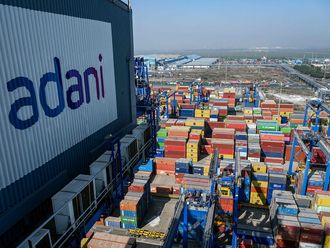
Highlights
122 - Number of new unicorns expected in India over the next 2 years
>2m - No of food deliveries carried out by apps in India this year
>100m - No of Indian citizens who have uploaded documents and certificates on Digilocker
2bn - No of Covid vaccines delivered by India through Cowin tech platform
5bn - No of official documents and certificates uploaded by users on Digilocker
>6b - No of transactions carried out by India’s digital payments interface — United Payments Infrastructure
The world’s largest free market democracy is perhaps now the biggest adopter and creator of emerging technologies. More than a billion citizens and consumers of India are getting direct benefits, leapfrogging over several legacy challenges.
The fourth industrial revolution has swept the country where a billion-plus people are getting last mile delivery of products and services both from the government and an entrepreneurial private sector. This scale of last mile delivery using tech platforms has no precedent in the history of democracy in the world.
A few statistics here would help. Food delivery apps have crossed 2 million food deliveries in a day. India’s digital payments infrastructure, United Payments Interface (UPI), crossed six billion transactions in July. UPI allows various financial transaction applications and is important for those who have not been part of the formal banking system. The number of billion-dollar-plus valuation unicorns in India has crossed 80, while Hurun Research Institute predicts the rise of another 122 in the next couple of years. India delivered 2 billion doses of vaccines though the tech-based Cowin platform.
Acronym for progress
All this has been made possible by a technological revolution which has taken root in India. In Hindi, the word for revolution is kranti. It has been associated mainly with India’s fight against British occupation, but the word also defines revolution at a grassroots level.
India was strong in shipbuilding, textiles and steel manufacturing, but a combination of regulatory, tax and policy measures were taken by the British to ensure that these industries suffered and India became dependent on their imports. India missed the industrial revolution on account of British rule.
The revolution in India today is of a different nature, a technology kranti and that is being led not just by IT companies, but a host of unicorn start-ups. These young and smart companies have rightly focused on solving for India. They are creating tech-based business models that are creating solutions for challenges considered unique to a populous and diverse market such as India. While the unicorns get a lot of attention for their billion-dollar-plus valuation, hundreds of smaller startups are successfully delivering smart solutions as well, and in sectors as varied as hospitality and aerospace.
This reflects a deep and widening spread of the fourth industrial revolution. This kranti for India also cradles a larger meaning. KRANTI is a newfound acronym for Knowledge, Research, and New Technology in India. Indian industry is now being incentivised to invest in research and knowledge on how best to grow with these new technologies.
India spent most of the 75 years of its independence in being dependent on technologies from other countries. Today, however the private sector is working with the government to bring new ideas for India’s fundamental needs.
Prime Minister Narendra Modi is a champion of the fourth industrial revolution and application of emerging tech. His focus on JAM, for instance has been transformative. JAM stands for Jandhan digital bank accounts, Aadhar digital identity and Mobile connectivity. He is persuading India’s farmers to begin using drones for improving yields. The government is providing fiscal incentives and support to private companies and farmers to use drones for farm surveys, crop protection and nutrient spraying, among others.
Automated weather stations placed in farms across the country are also helping provide important alerts on weather and soil conditions.
Virtual interface to the fore
The use of technology is being seen in services and sectors that had remained untouched. Take for instance the digital life certificate plan. A retired government employee has to submit a life certificate between November 1 and 30 every year to pension disbursing authorities. These are usually banks and post offices. Such physical processes are now being replaced by technology-based interfaces, which enable retirees to submit life certificates without having to visit disbursing agencies.
In the post-Covid world, physical submission of certificates created several difficulties. To overcome this, the Department of Personnel in the central government has begun a face recognition option for pensioners in the country. Pensioners can submit their digital life certificates (DLC) using a mobile phone-based app. The Jeevan Pramaan Portal offers various options to the more than 10 million people who receive pension every month from the state and central governments. Additionally, over 2.5 million pensioners are from the defence forces. With face recognition, millions of pensioners can receive benefits with ease.
Similarly, the National Highway Authority of India (NHAI) is infusing the use of technology in various activities. These include construction, road condition surveys, electronic toll systems and project team management.
NHAI is now using a cloud-based and artificial-intelligence-powered Big Data analytics platform – Data Lake. The entire project management workflow of NHAI is transformed from manual to an online portal. All project documentation, contractual decisions and approvals are now being done through the portal, and all contractors and project teams are mandated to work through the interface. Automated toll management is key to financial margins and improved efficiency for drivers. The FASTag, which deploys radio frequency identification (RFID) technology has been made mandatory and is expected to roll out across the country in the next few months.
For India, small is still big
Seeking, saving and managing important documents of identity, tax and assets has been a bane for India for decades. Now, e-governance initiatives across national and regional departments have begun to show credible results. For instance, more than 100 million Indian citizen have signed up and loaded important documents and certificates on the Digilocker platform.
In India, each individual needs to keep a few essential documents for identity, education, tax, transactions and utility functions. Until recently, the best option was to save the physical copies or access them on various portals. Launched by the Ministry of Electronics and Technology in 2016, Digilocker allows more than 550 types of documents issued by over 1,700 institutions that are connected to the Digilocker platform, to be uploaded. The Digilocker platform had a slow start, though. Till 2020 the number of registered users on the platform were about 38 million. However, user numbers more than doubled in just one year to over 91 million by 2021. In March this year, the number of users crossed the 100 million mark. These users have stored and saved about 5 billion documents on the platform. For a country 1.3 billion strong, a 100 million might sound miniscule, but by global standards it is a remarkable marker worth celebrating.
Artificial intelligence, on its part has become an important element in healthcare diagnostic services, while blockchain has been eagerly deployed by government departments and private players for various objectives ranging from payroll management to customer identity management. Steadily and surely, the JAM trio is driving digital deep into India.
Challenges and opportunities
Examples like these will grow multifold in the coming decades. The government has opened up the geo-mapping and space sector for participation by the private sector. Several space tech start-ups are working with the Indian Space Research Organisation. In terms of glocal outreach, Google Streetview launched in India in collaboration with Indian companies, Tech Mahindra and Genesys. Another Indian company, MapmyIndia launched its own street view offering.
India still has to manage many challenges. The main issue is investment in digital infrastructure. Its focus on creating a nationwide broadband grid is still underway. After much delay the 5G mobile services roll out will begin this year. Investment in skills and science is way behind the global benchmark. With ubiquitous use of connected devices and digital services management of personal data still a big gap in India’s policy landscape, a new data privacy law is expected later this year after much debate and amendments. From electric vehicles to satellites and semiconductor manufacturing, India has a lot to look forward to in its next 25 years as it accelerates its journey on the high-tech highway.
- The writer is an economic analyst and adviser based in India and author of the books Kranti Nation: India and The Fourth Industrial Revolution, and India Automated: How the Fourth Industrial Revolution is Transforming India













